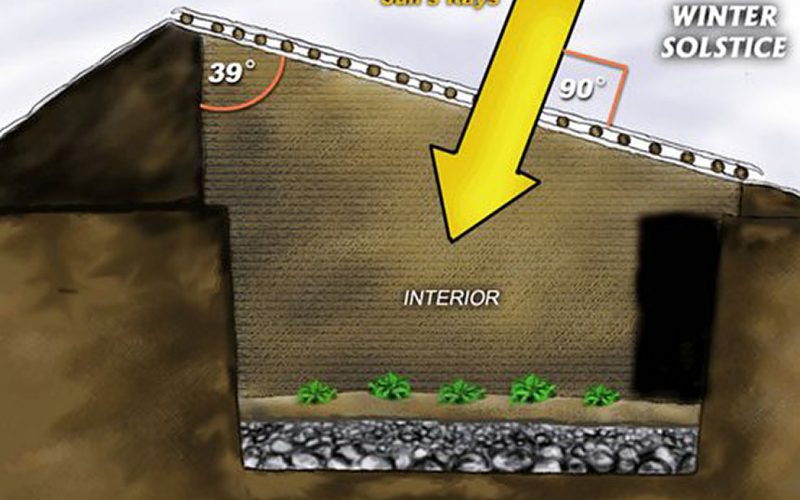A walipini is an underground greenhouse that lets you grow food year-round. The name “walipini” comes from the Aymara Native American language and means “a place of warmth.” The idea was first developed in Bolivia, South America.
Walipinis are currently promoted as a potential answer to difficult growing conditions due to drought, harsh winters and climate change, and a solution to having to ship produce long distances rather than grow it locally year-round. The ground stays roughly fifty degrees, so minimal heating and cooling is required. Walipinis can vary greatly as a do-it-yourself project, but typically include a dug out rectangular area the shape of an upside down asymmetrical trapezoid about 8 feet underground with a layer of gravel for drainage, a layer of topsoil saved from the excavation, and a bermed wall made from the remainder of the soil from excavation.
For the roof, people typically use poles or plywood beams and interior and exterior sheets of plastic, or salvaged windows. This clear panel lets the sunlight inside and should be facing 90 degrees towards the sun on the winter solstice (around December 21st in the northern hemisphere) in order to capture the most heat from the sun’s rays. Angle it so that sunlight reflects off of the enclosure in the summer when the sun is much higher, so that it doesn’t get too hot inside.
Make sure your goats or other animals don’t walk on the plastic, because if damaged, leakage problems may occur and damage or kill plants. Ventilation is another concern, because it could get too hot without a vent or trap door to allow heat to escape, but also because of moisture build-up which is very damaging to plants like tomatoes. The leaves become wet constantly and droop onto the tomato fruit, causing black spots.
A good resource on how to build a walipini is The Earth Sheltered Solar Greenhouse Book by Mike Oehler, which can get you started thinking about design. But because this is an older book, for full-color photographs the best place to go is online. The Benson Institute, which has done a considerable amount of research on various greenhouse types, estimates that an average walipini costs about $300 to build. According to the Benson Institute, “The Walipini utilizes nature’s resources to provide a warm, stable, well-lit environment for year-round vegetable production. Locating the growing area 6’- 8’ underground and capturing and storing daytime solar radiation are the most important principles in building a successful walipini.”
Walipinis are most useful in areas with cold winters. Hoop houses and green houses are used in northwest Arkansas, but if that’s cost prohibitive for you, look into the feasibility of a walipini, which is considered cheaper to build. They’re also great for more than just plants – the largest walipinis include comfortable pens for farm animals!
Ripples innovates solutions that maximize positive ripples in the world. We operate a 100% solar-hosted website with resources and services for individuals and non-profit organizations. For more information, visit: www.RipplesBlog.org.











